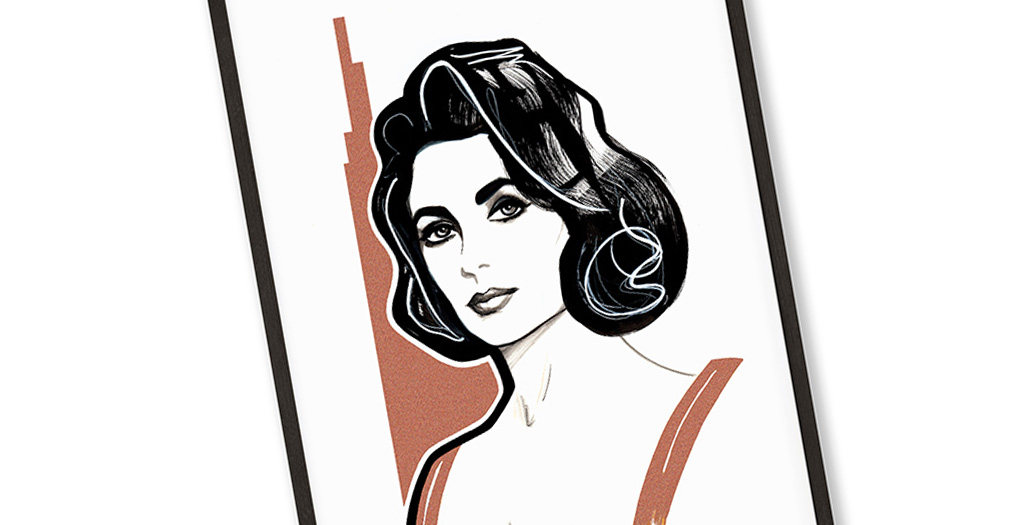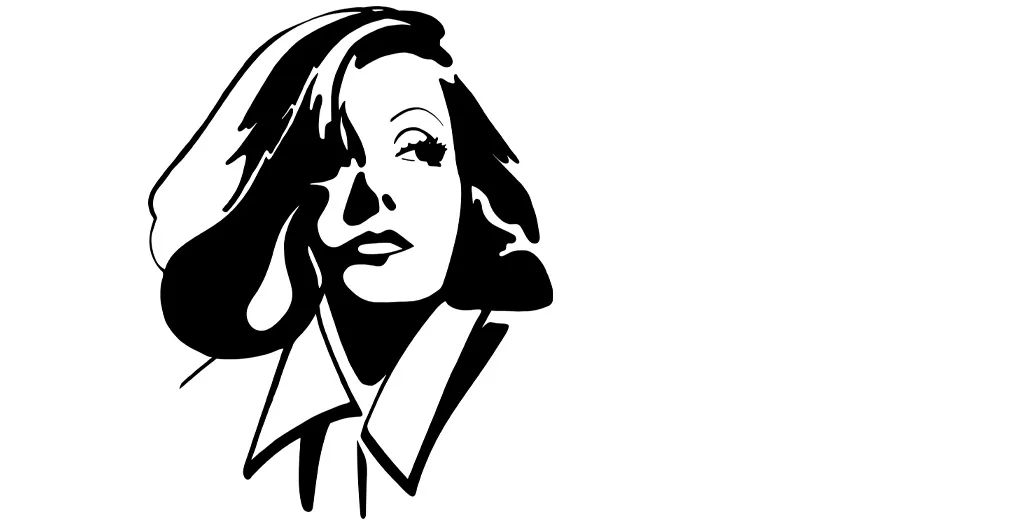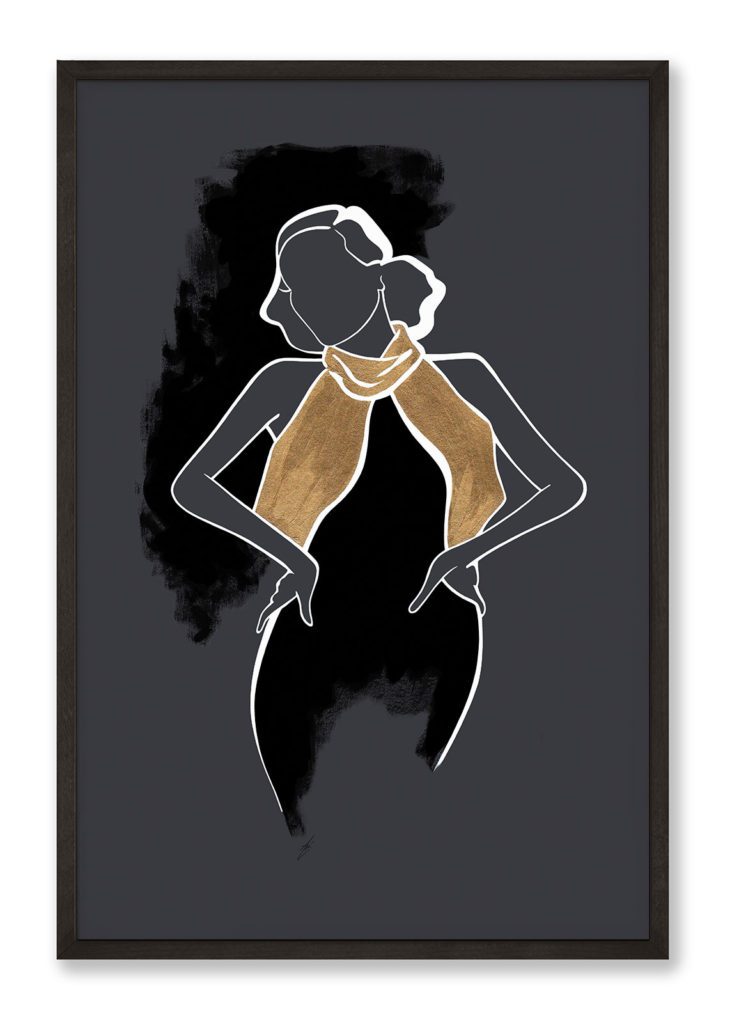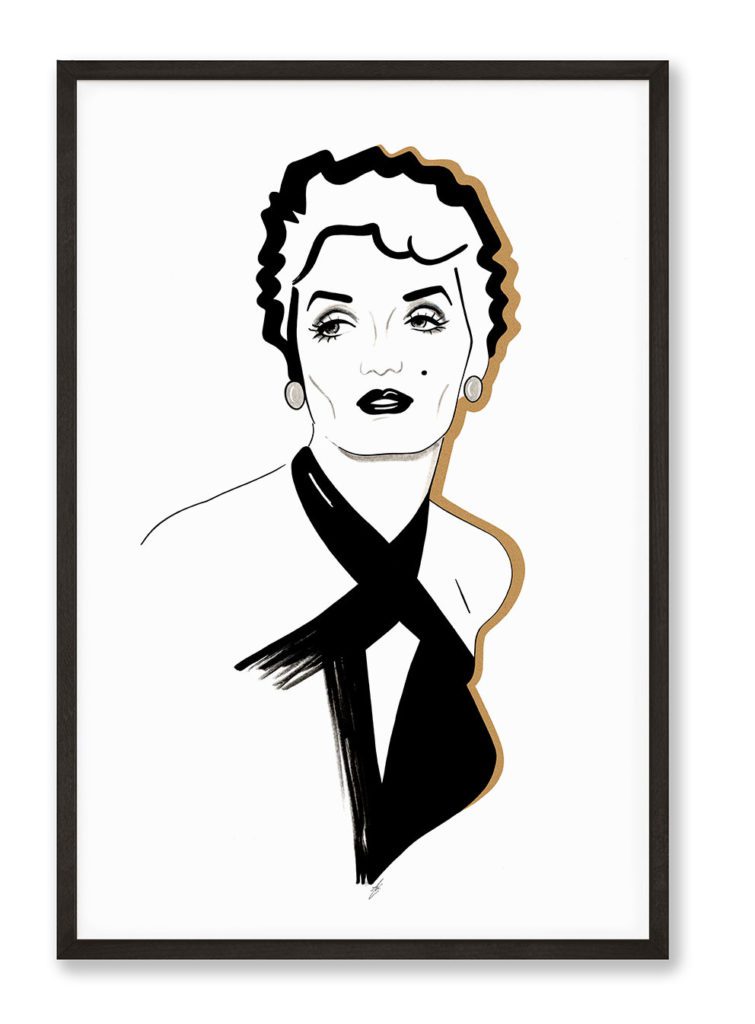Jean Harlow
The first platinum blonde star of Old Hollywood




Hi, I'm Kate!
What I am most passionate about is to inspire you to see that your life is your own and biggest masterpiece.
Jean Harlow was the first very platinum blonde Hollywood star and drove audiences crazy with her bias-cut dresses and cleavages – and with her superb comedic talent. Her career and life were tragically cut short when she died at age 26 from kidney failure. Her legacy, her style and her beauty will live on forever though.
LISTEN TO THE PODCAST
SUBSCRIBE TO THE PODCAST
Beginnings
Harlean Harlow Carpenter was born on March 3, 1911 in Kansas City, Missouri. Her parents actually were quite well-to-do and had money – so Harlean’s childhood was not missing anything.
Harlean’s father Mont Clair Carpenter was a dentist with a working class background. Mother Jean Poe Harlow came from money – her father was real estate broker Skip Harlow. Their marriage was an arranged one due to Skip’s making, Jean was still underage then, was not happy about the marriage and grew bitter and unhappy in the marriage. But Skip had the money – and so Jean and her husband Mont Clair Carpenter lived together in a house that Skip owned.
Three years int o marriage, Harlean was born. Her nickname was „Baby“ – and it was used so often that she wasn’t aware that she had a real first name until she attended school and was called by „Harlean“. This nickname stuck with her for the remainder of her life – those close to her would always call her „Baby“.
Hearlean’s relationship with her mother was very close – Jean had always made sure that her daughter would know that everything she had was because of her. Jean was extremely protective and saw Jean as her’s and her’s alone!
FInally, in 1922, after 14 years of marriage, Jean Harlow filed for divorce from her husband and receive sole custody for Harlean – sadly, Harlean would rarely ever see her father again.
Mother and daughter moved to Hollywood – with Jean hoping to become an actress – but was told to be too old already. At school, Harlean would meet later superstars Douglas Fairbanks Jr. , Joel McCrea and Irene Mayer Selznick. It could have been great – but, Skip Harlow, the patriarch of the family ordered Jean and daughter Harlean back to Kansas City, otherwise he would disinherit them. With their stark financial situation, there was no other option than to obey.
Their next move was to Lake Forest, Illinois as Jean Harlow had fallen in love with Marino Bello, who lived in Chicago. Harlean attended the Ferry Hall School in Lake Forest and got to know Charles „Chuck“ Fremont McGrew, who was heir to quite some fortune, in 1927, when Harlean was only 16 year-old, they married with a five year age-gap between them. Shortly after the wedding, McGrew at 21 years received part of his inheritance. These two, wealthy, young and beautiful moved to Los Angeles. McGrew’s ulterior motive? To get some distance between Harlean and her possessive mother. Settled in Los Angeles they partied and drank a lot – Harlean enjoyed the life of an upperclass socialite with not worries in the world.
Start in Hollywood
Harlean befriended many from the film industry and while she was waiting for one of her actress friends on the Fox Studio lot, she was approached by executives from the studio, but flat out declined. Nevertheless, she receive a letter of introduction to a casting company for extras, stand-ins and body-doubles. Her friend dared Harlean to go there and Harlean would never chicken out of a dare – so she went there. Probably her mother Jean, who had followed her to Hollywood, pressed her into going there as well, trying to see her own acting ambitions fulfilled by her daughter. So, Harlean went, but signed on under her mother’s name, Jean Harlow – hence the sometime’s confusing names of mother and daughter.
Harlean wasn’t too keen on working, but her mother pressed her into accepting work with one of the studios. So, Harlean accepted some stints as an unnamed extra, with a pay of roughly $130 if adjusted for inflation. In 1928, she signed a five-year-contract with Hal Roach Studios for $100/week ($1,859 today). Hal Roach was specialized in comedies and Jean appeared in several Laurel and Hardy shorts with even costarring credits. But, the contract was terminated already the following year. Jean reportedly told Hal Roach „It’s breaking up my marriage, what can I do?“ And he subsequently tore up her contract. Later that year, Jean Harlow was photographed nude by Edward Bower. Jean divorced McGrew that same year. The cause for the divorce? It could be the heavy drinking on both sides, it could have been Jean’s acting and posing. Subsequently, Jean moved back in with her mother and her beau Marino Bello. That could have been the end of Jean’s career.
Hell’s Angels & Howard Hughes
But, soon after, Jean was discovered for a second time – this time to Howard Hughes, who was in the process of reshooting „Hell’s Angels“ with sound – and was in desperate need of an actress to replace Greta Nissen, who had a thick Norwegian accent and was thus not suitable for the role. Jean screen-tested for Hughes, got the role and signed another five-year-contract this time with Hughes for the same wage as at Hal Roach’s – $100/week.
When Hell’s Angels premiered roughly seven months later it became the highest-grossing film of 1930 – although it was the year that Greta Garbo made her talkie debut in Anna Christie. Harlow become an instant star with the audiences, although the critics were not so sure of her talent, but conceded that she was great to look at. Jean was sent on a heavy promotional tour with lots of personal appearances, drawing the crowds.
As Hughes did not have any other picture available during the subsequent months, Jean was loaned to other studios and appeared in movies together with Wallace Beery, Clark Gabe, Robert Armstrong and James Cagney.
Platinum Blonde
Jean Harlow’s first major movie for Columbia Pictures was „Platinum Blonde“ co-starring Loretta Young. Initially the movie had been called „Gallagher“ as Loretta Young’s main character, but was renamed to take advantage of Jean Harlow’s growing popularity. Although Jean Harlow initially denied that her platinum hair was dyed or bleached, it actually was. Every week, ammonia, Clorox bleach and Lux soap flakes were applied to her hair to keep the color. Therefore, another genius Hollywood marketing campaign was conceived: A contestant for beauticians – with $10k prize money for the one that matched Jean Harlow’s platinum blond hair color. Non one was able to match the color and the money went unclaimed. But, of course, the movie „Platinum Blonde“ became a box office hit and Jean Harlow was stuck with the moniker.
Star at MGM
Next, Harlow got an engagement with MGM and was sent across the country for personal appearances – although Harlow detested them. But, she packed each and every theatre that she attended for the filming of her MGM movie „The Beast of the City“ (1932). After this enormous success, Paul Bern, romantically involved with Harlow, tried to convince Louis B. Mayer to buy Harlow’s contract from Hughes, but Mayer declined – MGM was glamour and elegance. For him. Harlow did not fit the picture. Head of production, Irving Thalberg was more inclined and finally agreed, so in 1932, MGM bought Harlow’s contract from Hughes for $30k (today: roughly $700k).
At MGM, Jean Harlow was given the chance to shine her enormous comedic talent in a variety of comedies and was paired a total of six times with Clark Gable – their onscreen comedy and verbal banter was pure gold. But, as usual, MGM couldn’t resist to try to change Jean Harlow into a star of their own liking. So, they put out press releases that claimed that her birth name was not „Carpenter“, but „Carpentier“ to make her come from French origin, even a distant family connection with Edgar Allan Poe was created to make her seem more distinguished.
Jean Harlow’s hits „Dinner at Eight“ and „Bombshell“ followed in 1933 with a then 22-year-old Jean Harlow. Several high-profile movie roles followed. One of them was „Wife vs. Secretary“ in 1936 opposite Myrna Loy and James Stewart. One rememberable quote by James Stewart is the following: „Clarence Brown, the director, wasn’t too pleased by the way I did the smooching. He made us repeat the scene about half a dozen times … I botched it up on purpose. That Jean Harlow sure was a good kisser. I realized that until then, I had never been really kissed.“
Health and Death
Jean had been seriously ill multiple times throughout her life. At age five, she had suffered from meningitis and at age 15 from scarlet fever. The latter would actually prove fatal for Jean.
During the filming of „Suzy”, „Wife vs. Secretary“ and „Libeled Lady“ in 1936, Jean Harlow had gotten sick and delayed filming multiple times.
In January 1937, 26-year-old Jean Harlow got sick with influenza but recovered in time for the Academy Awards that she attended with William Powell. In March that year, filming for „Saratoga“ co-starring Clark Gable began. But Harlow would develop sepsis after having multiple wisdom teeth removed and needed to be rushed to the hospital. In late April, she had recovered enough to resume her filming responsibilities. But already a month later, she complained of feeling sick – her symptoms included fatigue nausea, fluid retention, weight gain, grey skin and abdominal pain. The studio doctor believed it to be a gallbladder inflammation. But a week later, she felt sick and wanted to be taken home. Harlow’s partner William Powell called a doctor as well as her mother to check up on Jean. As Jean had been sick on previous movies before and had delayed their filming, there was no particular concern on either side. Again, she was diagnosed with an inflamed gallbladder and was expected to get back to the set a week later. Clark Gable who visited his friend and frequent co-star would later recall that Harlow was seriously bloated and that her breath smelled of urine.
Another doctor was called – and realized that Jean Harlow was not suffering from an inflamed gallbladder but from imminent kidney failure. At this stage, she was not able anymore to see clearly, rushed to the hospital and slipped into a coma. Within 12 hours, on June 7, 1937, at age 26, Jean Harlow died from excess accumulation of fluid in the spaces of the brain, a complication of kidney failure. Her death certificate lists „acute respiratory infection“, „acute nephritis“ and „uremia“.
The cause for this quick succession of events is likely in the scarlet fever that she had contracted as a teenager. One of the possible long-term effects of the disease is poststrococcal glomerulonephritis – both kidneys will suffer and can lead to kidney failure. Also, Harlow had suffered from a very severe sunburn the year before and state of science now states that sunburns can have deathly affects on the kidneys.
Jean Harlow had been rest to peace at Forest Lawn Memorial Park in Glendale in a marble room that William Powell had purchased. Jean was wearing a pink negligée from her latest film set and holding a white gardenia with the note „Goodnight, my dearest darling“ by William Powell. Actually, the marble room held two additional spaces, one for her mother, one for Powell. Indeed, Mother Jean was buried there in 1958, but Powell would later marry actress Diana Lewis, cremated upon his death, cremated and buried in Desert Memorial Park.
Relationships
Charles „Chuck“ Fremont McGrew
Abner Zwillman – Abner Zwillman was a gangster. one of the big names of the American Mafia clans and one of the founding members of the nationwide crime syndicate Murder Incorporated. He controlled up to 40% of the liquor bootlegging in the US during the prohibition era. Zwillman and Harlow only dated briefly. During this time Jean received a red Cadillac and jewelry – and her salary increase at Columbia might also be due to the $500k that Zwillman loaned studio head Harry Cohn.
Paul Bern (Husband #1) – Jean Harlow met Paul Bern, an MGM executive, during the filming of „Hell’s Angels“ and they married in 1932, when Jean was only 21 years old. Two months after the wedding Paul Bern was found dead at their shared home. His death was determined to have been a suicide by a self-inflicted gunshot wound. Jean Harlow remained silent during the investigation and survived it without public backlash. There were theories that Bern’s common-law wife Dorothy Millet killed him, but this theory had been proved wrong. Suicide really is the most probably reason – especially with a suicide note apparent at the crime scene. Nevertheless, it is a fact that MGM tapered with the crime scene for 2 hours before the police arrived.
Max Baer – Jean Harlow and Max Baer started an affair shortly after the death of Jean’s husband Paul Bern. Although Bae was separated from his wife Dorothy Dunbar, but not yet legally divorced, MGM feared for another scandal involving one of their most bankable stars at that moment. So, they quickly arranged a marriage between Jean Harlow and cinematographer Harold Rosson.
Harald Rossen (Husband #2) – As Rosson and Harlow were good friends, Rossen went along with the charade of an arranged marriage. He married Jean Harlow and the two quietly divorced eight months later.
William Powell – Jean Harlow and William Powell met in 1934, when Harlow had already been divorced from husband #2 Harold Rossen and fell in love quickly. But, they did not make the relationship public as William Powell was not sure about the future. But he was by Jean’s side during her last days and cared deeply for her. He actually had planned to be buried beside her and waited 13 years to remarry.
Miscellaneous
- Jean Harlow was the godmother of Bugsy Siegel’s eldest daughter, Millicent. While the Siegel’s were still living in LA, they were well integrated into the celebrity circles of the town. Millicent had riding lessons with Elizabeth Taylor, Jean Harlow gave her a bath and Cary Grant would sometimes come over as well.
- The name Jean Harlow is also used for a cocktail with equal parts light rum and sweet vermouth.
- After her death, Jean Harlow was given a star on the Hollywood Walk of Fame in 1950.
- Jean Harlow wrote a book called „Today is Tonight“ which was only published after death in 1965.
With all my love!
xx






